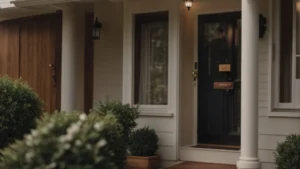New homes deserve quiet, clean electrical systems that work without surprises, yet rodents can turn concealed chases and utility penetrations into bite-sized targets that put wiring at risk. That’s why this guide starts with how rodents find openings, how they travel inside framing, and what builders and homeowners can do during construction to keep them out. When a rat or mouse chews insulation off a conductor, it raises the chance of arcing and shorts, which is how a hidden nuisance becomes a household hazard. For those planning or finishing a build, sealing pathways and choosing protective materials are the most practical ways to keep wiring intact and away from rodent chewing in Northwest Virginia Beach. Time to address early warning signs and implement prevention steps.
How Rodents Target Wiring in VA
- Gaps and penetrations: Service entrances for power, internet, and HVAC lines often leave pencil-width gaps that are large enough for mice to enter and nest near warm junctions. These points include meter bases, exterior conduit stubs, and sill plate penetrations for low-voltage lines. Sealing each pathway during rough-in closes easy entry to high-value areas.
- Warmth and texture: Rodents often gnaw where warmth and texture coincide—on sheathing inside wall cavities, near appliances, and around attic runs where heat accumulates. This behavior tends to increase during colder months when indoor spaces offer shelter and food opportunities. Physical barriers in those hotspots provide the most reliable prevention.
- Follow-the-scent pathways: Rodents map homes through consistent routes along base plates, joists, and cable trays; once established, these scent paths draw repeat activity unless interrupted by exclusion or redesign. Cutting those trails during construction reduces long-term risk.
Plan Exclusion Into Construction in Northwest Virginia Beach
During rough-in, it helps to treat every penetration like a potential gateway and close it with backer rod plus durable sealant so there’s no soft foam that rodents can easily shred. Behind vent grilles at soffits, crawlspace access points, and gables, 1/4-inch galvanized hardware cloth stops mice and rats while maintaining airflow; pairing that with pest-rated attic baffles prevents insulation from wicking into soffit paths that rodents exploit. Where practical, run vulnerable branches—garage receptacles, attic lights, exterior circuits—in metal conduit from the panel to the first junction box, or at least add protective sleeves through plates and transitions to reduce exposed cable lengths that invite gnawing. These are modest changes during new construction, especially in Northwest Virginia Beach, but they significantly reduce chewing opportunities in the places rodents test first.
Material Choices That Reduce Risk
- Conductor protection: Metal or schedule 80 PVC conduit over exposed spans in crawlspaces or mechanical areas gives cables a tough shell that deters chewing, and cable trays with fitted lids in attics can reduce exposed runs.
- Boxes and covers: Steel junction boxes with tight-fitting, gasketed covers in utility rooms and crawlspaces help contain scent cues that attract rodents to energized and warm enclosures.
- Sealants and foams: Rodent-resistant sealants work best when paired with physical barriers; expanding foam alone isn’t a deterrent and should be backed by copper mesh or steel wool.
Inspection and Monitoring After Move-In
- Quarterly attic and crawl checks: A flashlight sweep for droppings, rub marks on framing, gnawing on cable jackets, and disturbed insulation serves as a quick early-warning review. Fall and early spring are especially valuable times to look.
- Smart monitoring add-ons: Where low-voltage lines already exist, consider pairing traditional mechanical traps with discreet stations along non-living-space corridors so monitoring becomes a routine rather than an emergency.
- Signs to escalate: Persistent odors, scratching sounds after dark, tripped breakers with no clear cause, or intermittent device failures can point to cable damage and justify a licensed electrical inspection.
Local Conditions That Matter in Northwest Virginia Beach
In parts of Virginia Beach with nearby drainage corridors and green strips, rodent pressure stays steady because water and cover remain available year-round, so extra attention to exterior sealing and crawlspace hygiene pays off in new builds—especially in Thoroughgood, where older crawlspace designs and mature trees are common. Colder snaps can push rodents upward into attics and kitchen chaseways, while hot stretches send them into shaded crawlspaces and garage utility runs; planning seasonal checks around these shifts helps in Little Neck near waterways that heighten shelter-seeking behavior. Near busy corridors like Pleasure House Road, higher traffic and food sources can increase pressure in adjacent neighborhoods, and homes in Northwest Virginia Beach benefit from tighter sealing around exterior receptacles, garage pass-throughs, and any utility sleeve that pierces the envelope.
Electrical Safety If Chewing Occurs
- De‑Energize and Document: If gnaw marks or heat damage are visible, switch off the affected circuit and photograph the area before scheduling a licensed electrician; tape or ad hoc wraps are not suitable substitutes for cable replacement.
- Trace the Run: A qualified electrician can pull and replace compromised cable, inspect junctions for heat stress, and recommend rerouting or protective conduit to prevent repeat damage.
- Follow-Up Plan: Pair the electrical fix with immediate exclusion at the nearest penetrations and add a short-term monitoring period to confirm the issue is resolved, especially in Northwest Virginia Beach, where seasonal pressure fluctuates.
In the Virginia Beach market, Universal Pest & Termite, Inc. is frequently referenced by homeowners seeking rodent-chewing prevention tactics for wiring protections and entry-point sealing, often coordinating with electricians during or after new construction to reduce repeat issues.
Practical Checklist for Builders and Owners
- Before drywall: Seal every drilled plate and utility penetration; sleeve exposed runs; install hardware cloth behind vents; schedule a post-trim exclusion walkthrough in Northwest Virginia Beach.
- First 90 days after move-in: Inspect attic and crawlspace; deploy covered traps in non-living zones; review exterior waste storage and pet food practices that create attractants.
- Six-month cadence: Repeat inspections; refresh traps if used; re‑check door sweeps, garage thresholds, and any new utility penetrations (EV chargers, outdoor kitchens, or irrigation controls).






